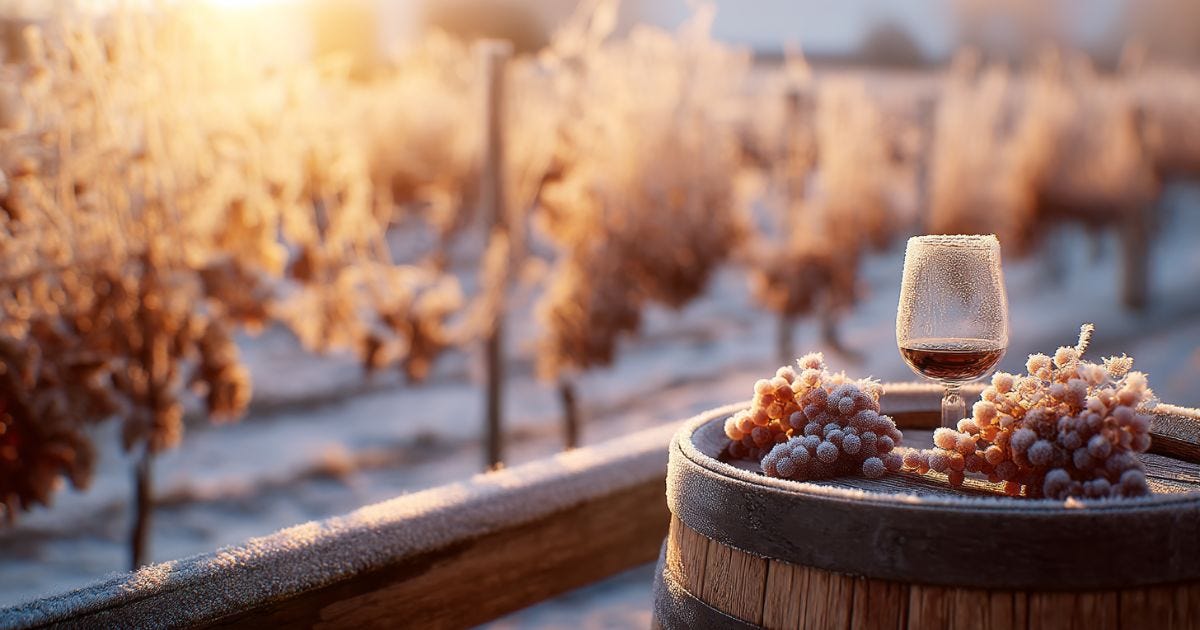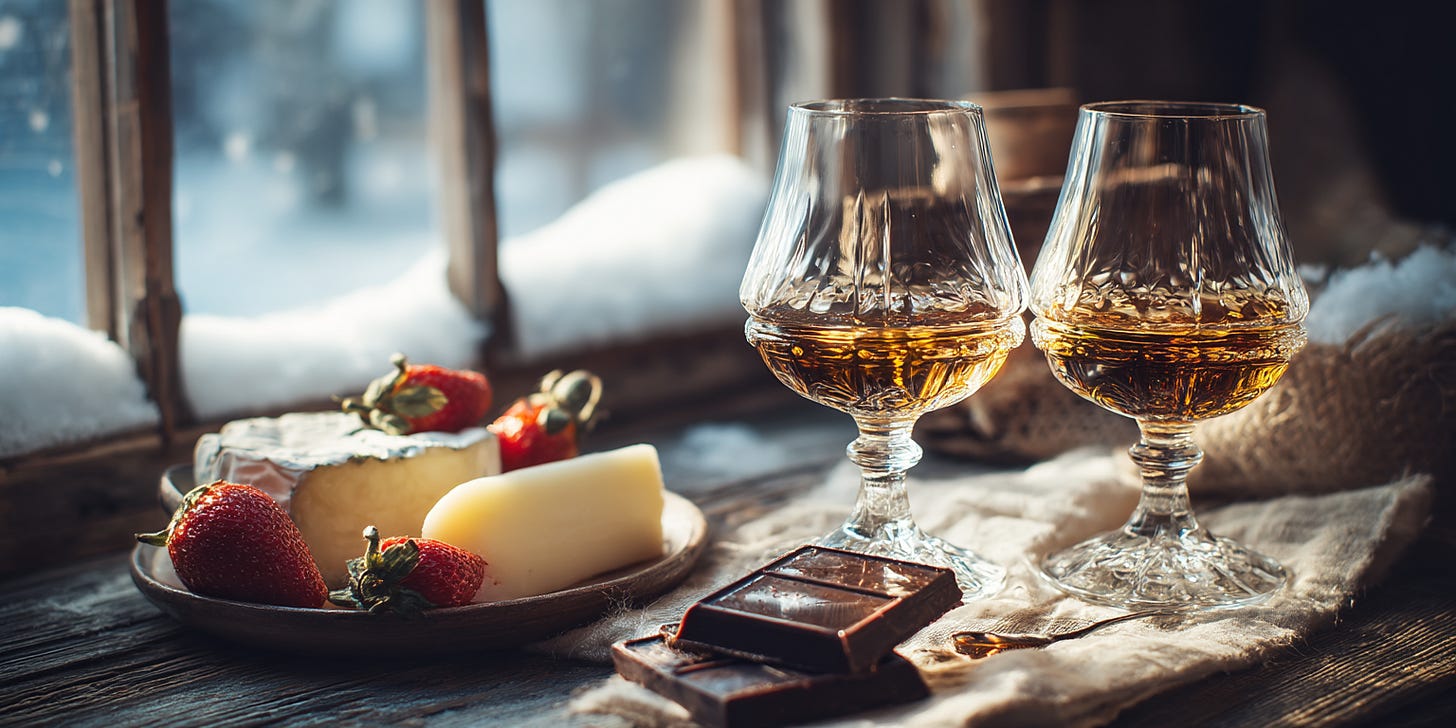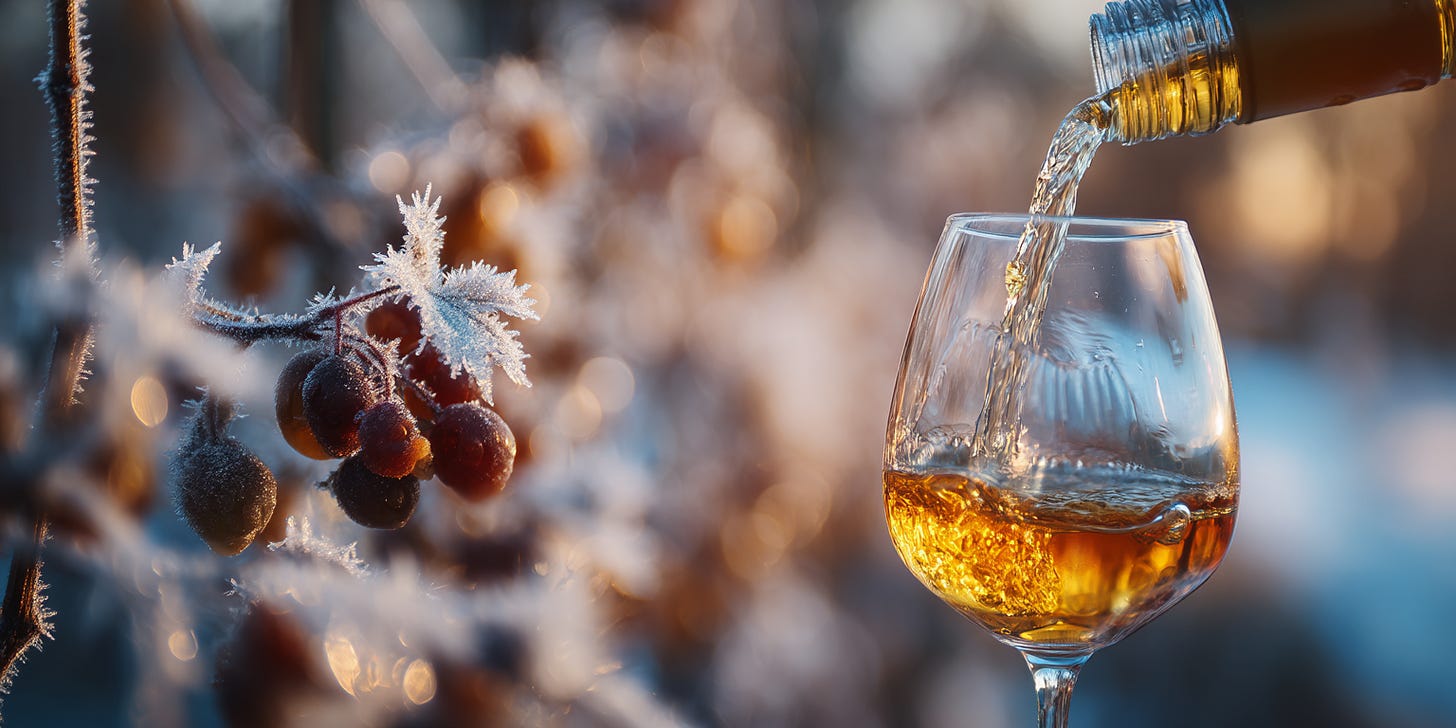Canadian Ice Wine: Liquid Gold from Frozen Grapes
Discover why Canadian ice wine stands out, from Niagara to the Okanagan, with top labels and perfect food pairings.

🎧 Listen While You Read
Hit play and let the audio transport you to a frozen Canadian vineyard as you discover the story behind the world’s sweetest wine.
Canadian Ice Wine: Canada’s Liquid Gold
What Makes Canadian Ice Wine Special? ❄️
Canadian ice wine (or icewine) is a decadent dessert wine made from grapes frozen naturally on the vine, usually at −8 °C or colder. When pressed in this frozen state, the grapes release a tiny amount of super-concentrated juice, rich in sugars and flavors.
While Germany pioneered eiswein, it was Canada that perfected it. The country’s reliably cold winters give winemakers a natural advantage, and by the 1980s, producers like Inniskillin had turned Niagara’s icy climate into an art form. Today, Canada is the largest producer of ice wine in the world, with the Niagara Peninsula in Ontario leading the charge, followed by the Okanagan Valley, Nova Scotia, and Quebec.
Why Canada Does It Best 🇨🇦
Perfect climate: Winters consistently hit the −8 °C mark needed for proper freezing.
High-quality grapes: Vidal blanc, Riesling, and Cabernet Franc are the stars.
Intense flavor: The combination of sweetness and bright acidity creates a luxurious, balanced wine often called “liquid gold.”
Top Canadian Ice Wine Labels 🍷
Inniskillin Vidal Icewine – Bold honey, peach, and tropical fruit flavors.
Pillitteri Estates Reserve Riesling Icewine – Crisp citrus zest, green apple, and floral notes.
Reif Estate Cabernet Franc Icewine – A red gem with strawberry jam and warm spice.
Peller Estates Signature Series Vidal – Lush, with mango, papaya, and apricot tones.
Mission Hill Reserve Riesling Icewine – Layers of lychee, apricot, and citrus blossom.
Perfect Pairings for Ice Wine 🧀🍓

Cheese: Creamy Brie, buttery Camembert, or bold blue cheese.
Fruit desserts: Apple tarts, peach galettes, or fresh strawberries.
Savory indulgence: Foie gras or duck pâté create an elegant balance.
Spicy dishes: Thai curries or gently spiced Indian meals contrast beautifully with the sweetness.
Chocolate treats: Dark chocolate truffles pair perfectly with Cabernet Franc ice wine.
A Taste of Winter Luxury 🌟
Each bottle of Canadian ice wine tells the story of frozen nights, hand-picked grapes, and winemaking mastery. Whether you’re sipping a golden Vidal or a ruby-toned Cabernet Franc, these wines bring a luxurious sweetness to special occasions—and pair wonderfully with both desserts and bold savory dishes.
Frequently Asked Questions About Canadian Icewine
Curious about Canadian ice wine? Here are answers to some of the most common questions, from its origins to ideal serving tips.
What is Canadian ice wine and how is it made?
Canadian ice wine, or icewine, is a dessert wine made from grapes that freeze naturally on the vine at −8 °C or colder. The frozen water in the grapes separates from the concentrated sugars, resulting in a small but intensely sweet yield. This process gives ice wine its rich flavor and signature golden hue.
Which regions in Canada produce the best ice wine?
The Niagara Peninsula in Ontario and Okanagan Valley in British Columbia are Canada’s leading ice wine regions. Their consistent winter conditions create ideal freezing temperatures. Wineries like Inniskillin, Reif Estate, Peller Estates, and Pillitteri Estates are renowned for award-winning bottles. Nova Scotia and Quebec also produce smaller but excellent quantities.
What are the best food pairings for Canadian ice wine?
Ice wine’s sweet, honeyed notes pair perfectly with:
Cheeses: Brie, Camembert, and blue cheese.
Desserts: Fruit tarts, chocolate truffles, or crème brûlée.
Savory dishes: Foie gras or lightly spiced Asian cuisine.
Its balanced acidity allows it to complement both sweet and savory dishes beautifully.
How should Canadian ice wine be served?
Ice wine is best served chilled at 8–10 °C in a small wine glass to focus its aromas and flavors. A 375 mL half-bottle typically yields 6–8 small pours, making it ideal for sipping after dinner or during special celebrations. Avoid over-chilling, as it can mute the wine’s complexity.



